Alumnus-owned property on view during Historic Garden Week Stonegate Guesthouse, recently purchased and renovated by Derek Hutton ’93, is a featured Lexington landmark of the Garden Club of Virginia’s 90th annual event.
The Garden Club of Virginia’s Historic Garden Week is back for its 90th year, and the nine-day event will showcase Lexington landmarks on Saturday, April 22.
Among these local treasures is Stonegate, a historic property on South Main Street, that is now in the hands of a Washington and Lee University alumnus. Derek Hutton ’93, and his wife, Margaret, bought the property in March 2022, and inherited a rich history.
“We were looking for a house with historical architecture and a story,” Derek said. “We wanted a house tied to the history of the area, but also the character of the house itself — one that represented Virginia, and Main Street America, too.”
Before Stonegate, the couple was running their fly-fishing company, Hutton Fly, out of Bair’s Lodge in the Bahamas. After the pandemic, they decided to move back to the U.S. to be closer to family, and house hunted in mountain towns throughout the southeast. Returning to Lexington wasn’t the original plan, but when they stumbled upon Stonegate, they knew it was meant to be.
“We kept coming back here,” Derek said, who majored in geology at W&L. “We looked at other towns, but we felt more connected to Virginia, particularly W&L and Lexington, because of experiences in our 20s.”
Built in approximately 1832, the original structure was a modest, one-room home. In 1859, the property was bought by Reverend William M. McElwee, who then expanded the dwelling to its current size.
Among its standout features, which are still preserved today: intricate woodwork, including massive pocket doors; large bay windows, outfitted with old panes of wavy glass; and 12- and 14-foot-high ceilings, uncommon for the time period.
Perhaps its most famous element is a trap door in the dining room, which Robert E. Lee, former W&L president and a close friend of McElwee, frequently used to exit through the back of the house and avoid curious bystanders.
Once situated on 175 acres of farmland, Stonegate’s history extends beyond the interior walls. McElwee and Lee often rode horses together on the property; after leaving through the trap door, Lee would untie Traveller from the backyard and ride on the land, right up to the stable on W&L’s campus.
A large front yard welcomed visitors to the estate; in fact, its name, Stonegate, refers to the formal entrance off South Main Street used by carriages and horses. While the farmland was subdivided and auctioned off in the 1850s, its front lawn has remained a central feature of the stately property.
Upon buying the property, the Huttons received a file of historic documents on Stonegate, including a list of prior owners and photos of the families. They now see themselves as “stewards of the property, and the story, and the culture of early Virginia.”
“This property has preceded us by a significant amount of time, and it will outlive us, too,” Margaret said. “It’s just our turn to take care of Stonegate.”
The Huttons enlisted the help of local contractors to bring Stonegate back to its former glory. While the bones of the old house were solid, it had not been occupant owned for more than five years. The property, particular the building’s exterior and the yard, needed a lot of work.
“When we bought the house, you could not see it from the road — it was so covered up and overgrown,” Margaret said. “The yard was out of control; there had not been any recent pruning, shaping or care.”
Among the long list of tasks included removing a mosquito-infested pond, a dilapidated fence, and 11 dying trees. They were able to maintain many of the mature trees on the perimeter and some of the previously planted bulbs. Numerous flower beds now sprout daffodils, azaleas, rhododendrons and tulips, among other varieties.
“I wanted something to be blooming all the time, so we can always bring the outdoors indoors,” Margaret said.
A critical component of the transformation was making the lawn more pedestrian-friendly, so that guests could enjoy the walk up to the house. They decided on a symmetrical tuning fork shaped path to give the property a more formal, yet welcoming, entrance.
“We thought the house was stately, so we wanted the path to frame the edges of the structure,” Derek said. “We set it up geometrically, while also softening the edges.”
After seven months of renovations and landscaping, the Huttons transformed the property into a bed and breakfast, now named Stonegate Guesthouse. In addition to overnight stays, Stonegate Guesthouse is rented out for events, such as W&L’s Parent Leadership Council, and will be hosting Derek’s class for its 30th reunion this May.
Derek notes that they have been embraced by the community with this project — from the local contractors who dedicated their time and energy to restoring the property, to the W&L offices, departments and organizations who want to partner with the historic space.
“Coming into a community after being away for so long, we felt really welcomed,” Derek said. “We embrace all these opportunities — with W&L, the city of Lexington, the county of Rockbridge and the Garden Club. I think people recognize there is an important story here, and that’s the draw.”
More about Historic Garden Week
The 90th Annual Historic Garden Week, which runs from April 15-22, features tours of private landscapes, public gardens and historic sites across Virginia.
In addition to Stonegate Guesthouse and The Gardens of Belfield, Historic Garden Week’s Lexington tour includes two additional stops: Mulberry Hill, which serves as the Kappa Alpha Fraternity Headquarters, and Magnolia House Bed & Breakfast, located at 501 South Main Street. The six-hour experience is both a shuttle and self-driving tour; however, Mulberry Hill and Belfield are shuttle-only stops.
Tickets are available to buy in advance for $25 online or $35 day-of at Lexington Visitor Center. Proceeds from the event benefit restoration and preservation of Virginia’s historic public gardens, along with a research fellowship program in landscape architecture. For more information, visit vagardenweek.org.
The Gardens of Belfield
Along with Stonegate, The Gardens of Belfield on W&L’s campus is another local gem on display during Historic Garden Week.
Located at 116 Liberty Hall Road, Belfield is a Tudor-style house that is the former residence of W&L alumnus and dean of students, Frank Gilliam, and his wife, Louise. The couple enlisted the help of Charles Gillette, a renowned landscape architect, to transform the grounds around their home into a garden. Designed in Gillette’s eclectic style, the garden is comprised of a series of spaces emphasizing horticulture, sculptures and architectural objects.
The Gilliams, who lived at Belfield for 47 years, were green thumbs dedicated to maintaining and growing the garden. In 1960, they received the Massie Medal for Distinguished Achievement from the Garden Club of Virginia.
Two gifts from an alumnus, received in 2009 and 2011, helped W&L acquire the house. In 2014, a gift from a separate donor, who was also an alumnus, created an endowment fund for restoring and maintaining the gardens. Belfield was formally dedicated as a guest house and special events venue for the university in 2013.
“The historic and beautifully preserved Belfield house and gardens are an important part of the historic architectural landscape at Washington and Lee,” said Tom Jennings, vice president for University Advancement. “Belfield is a lasting symbol of the gentility, civility, tradition and community that they exemplified during Dean Gilliam’s three decades as dean at W&L and Mrs. Gilliam’s term as president of the Garden Club of Virginia. Dean Gilliam’s portrait hangs in Washington Hall’s second floor, as a tribute to his exceptional service to W&L.”
Learn more about Belfield at columns.wlu.edu/wl-dedicates-belfield-as-guest-house-special-events-center/.
 Derek Hutton ’93, and his wife, Margaret, at Stonegate Guesthouse
Derek Hutton ’93, and his wife, Margaret, at Stonegate Guesthouse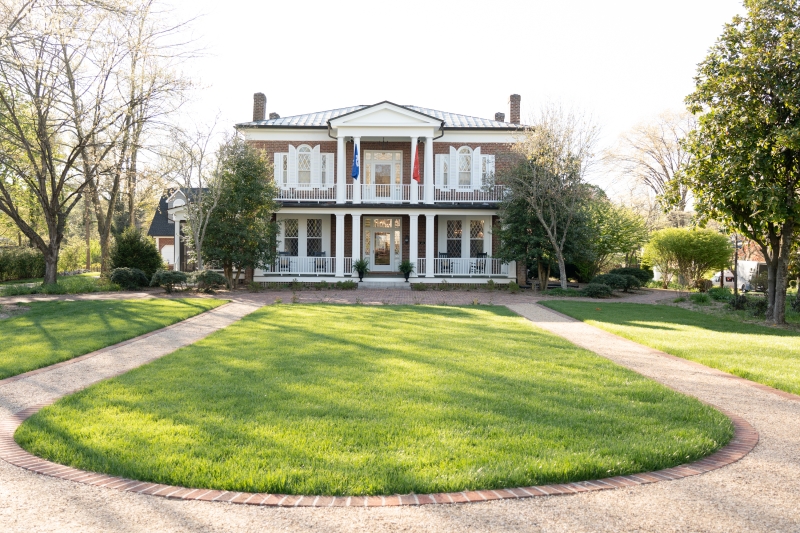 Located on South Main Street, Stonegate is within walking distance from W&L campus and downtown Lexington.
Located on South Main Street, Stonegate is within walking distance from W&L campus and downtown Lexington.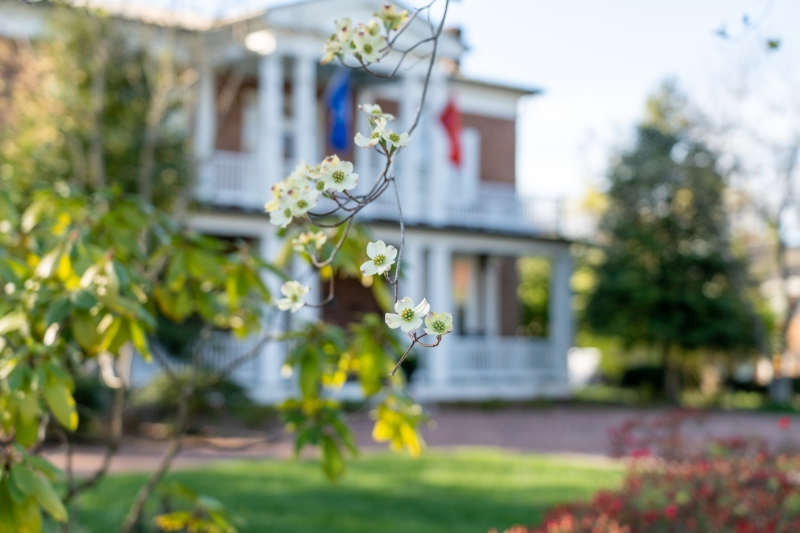 Dogwood trees line the perimeter of Stonegate Guesthouse
Dogwood trees line the perimeter of Stonegate Guesthouse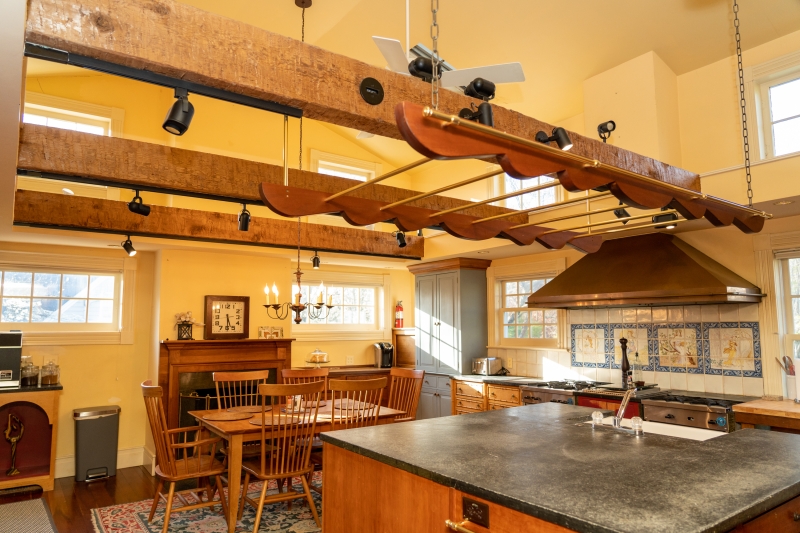 Stonegate was originally built as a one-room structure. When it was expanded, that room was transformed into the kitchen.
Stonegate was originally built as a one-room structure. When it was expanded, that room was transformed into the kitchen. The sitting room of Stonegate Guesthouse features ornate bay windows with wavy glass, which are original to the house.
The sitting room of Stonegate Guesthouse features ornate bay windows with wavy glass, which are original to the house.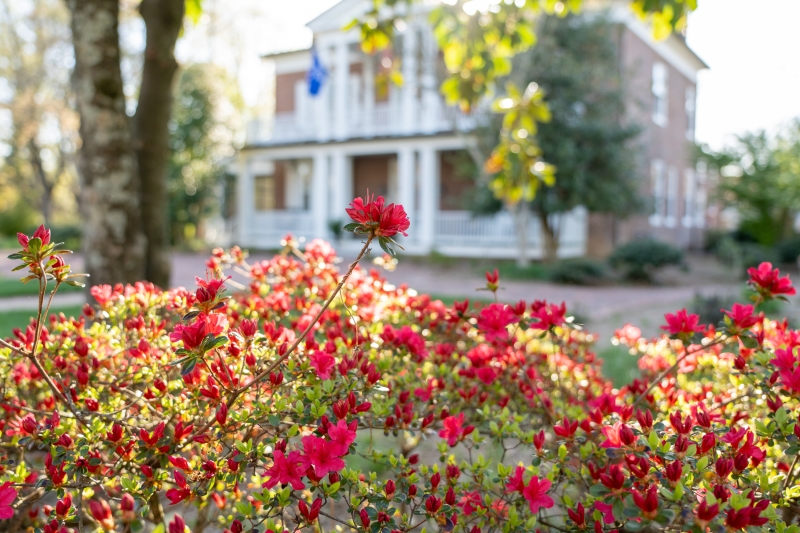 Flowers in bloom at Stonegate Guesthouse
Flowers in bloom at Stonegate Guesthouse The dining room of Stonegate Guesthouse, which features a trap door original to the house.
The dining room of Stonegate Guesthouse, which features a trap door original to the house.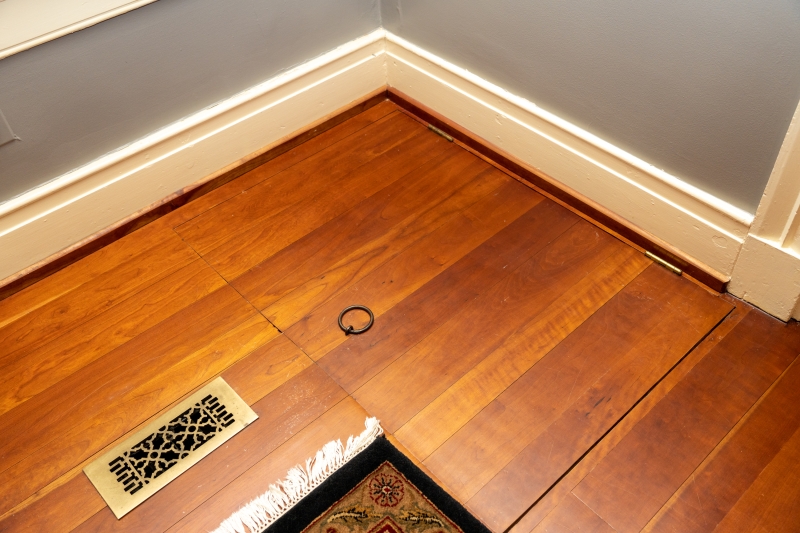 The Huttons welcome any visiting alumni who want to drop in and see the trap door, which was used by former W&L president Robert E. Lee.
The Huttons welcome any visiting alumni who want to drop in and see the trap door, which was used by former W&L president Robert E. Lee.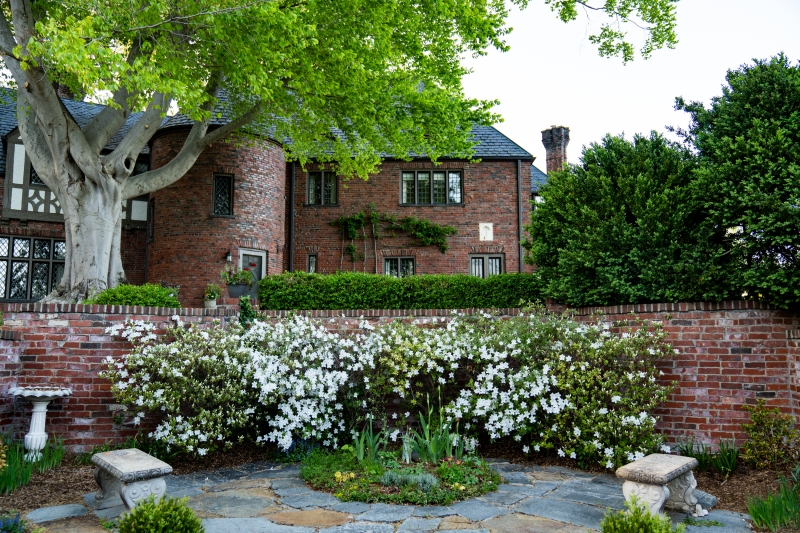 The Gardens at Belfield
The Gardens at Belfield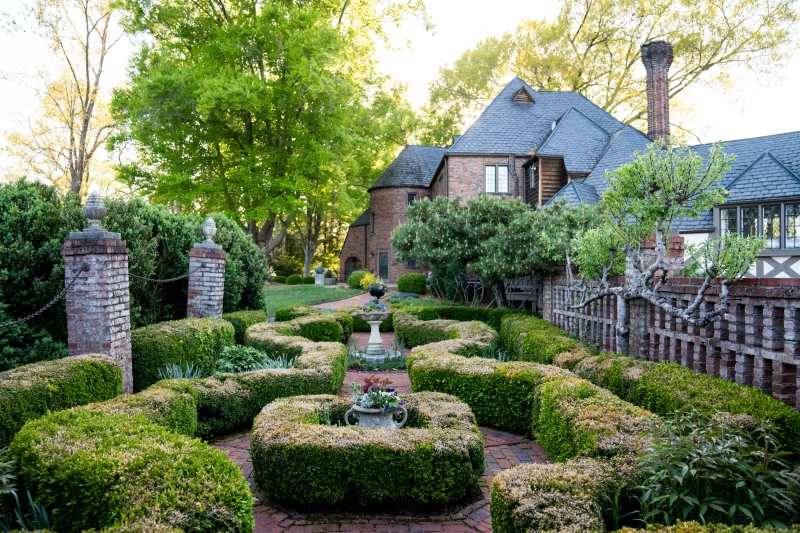 The Gardens at Belfield
The Gardens at Belfield The Gardens at Belfield
The Gardens at Belfield
You must be logged in to post a comment.